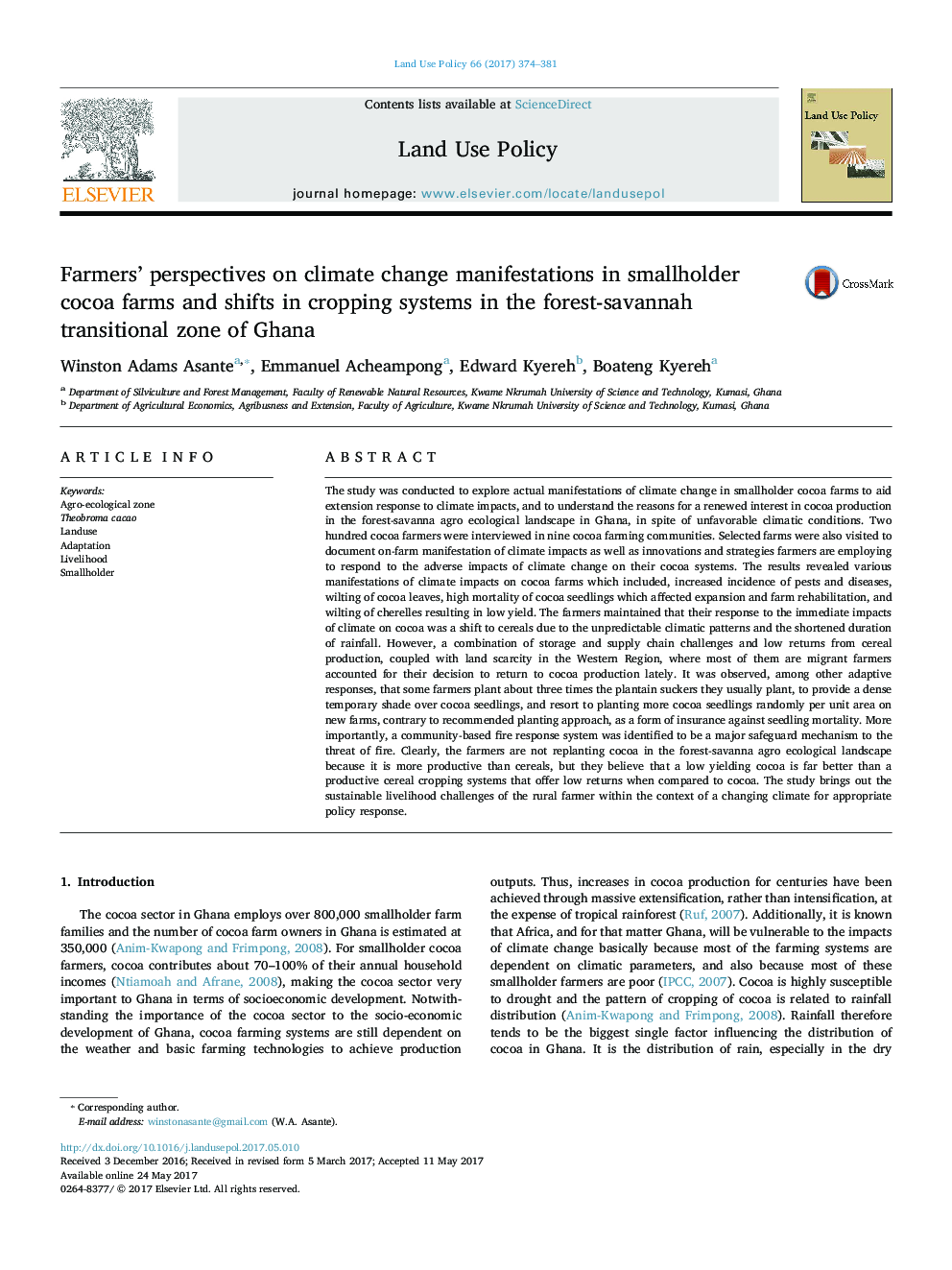| Article ID | Journal | Published Year | Pages | File Type |
|---|---|---|---|---|
| 6460964 | Land Use Policy | 2017 | 8 Pages |
The study was conducted to explore actual manifestations of climate change in smallholder cocoa farms to aid extension response to climate impacts, and to understand the reasons for a renewed interest in cocoa production in the forest-savanna agro ecological landscape in Ghana, in spite of unfavorable climatic conditions. Two hundred cocoa farmers were interviewed in nine cocoa farming communities. Selected farms were also visited to document on-farm manifestation of climate impacts as well as innovations and strategies farmers are employing to respond to the adverse impacts of climate change on their cocoa systems. The results revealed various manifestations of climate impacts on cocoa farms which included, increased incidence of pests and diseases, wilting of cocoa leaves, high mortality of cocoa seedlings which affected expansion and farm rehabilitation, and wilting of cherelles resulting in low yield. The farmers maintained that their response to the immediate impacts of climate on cocoa was a shift to cereals due to the unpredictable climatic patterns and the shortened duration of rainfall. However, a combination of storage and supply chain challenges and low returns from cereal production, coupled with land scarcity in the Western Region, where most of them are migrant farmers accounted for their decision to return to cocoa production lately. It was observed, among other adaptive responses, that some farmers plant about three times the plantain suckers they usually plant, to provide a dense temporary shade over cocoa seedlings, and resort to planting more cocoa seedlings randomly per unit area on new farms, contrary to recommended planting approach, as a form of insurance against seedling mortality. More importantly, a community-based fire response system was identified to be a major safeguard mechanism to the threat of fire. Clearly, the farmers are not replanting cocoa in the forest-savanna agro ecological landscape because it is more productive than cereals, but they believe that a low yielding cocoa is far better than a productive cereal cropping systems that offer low returns when compared to cocoa. The study brings out the sustainable livelihood challenges of the rural farmer within the context of a changing climate for appropriate policy response.
